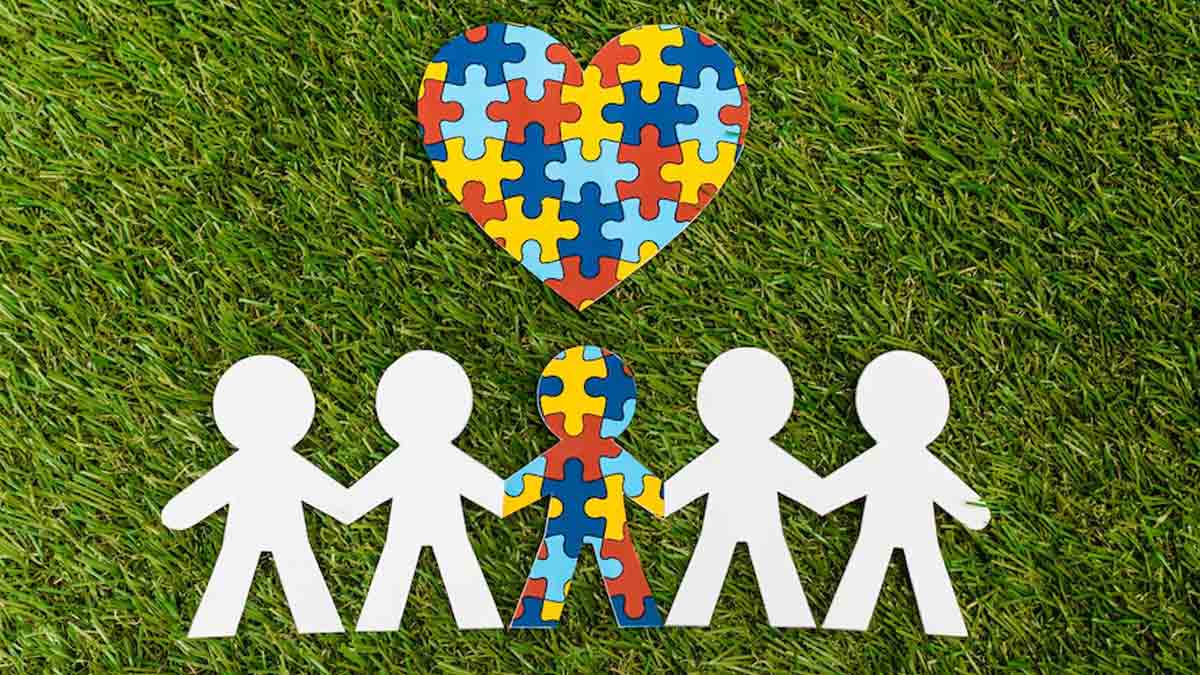
Every year on April 2, we observe World Autism Awareness Day. The tradition has continued for the past 17 years since the United Nations General Assembly unanimously dedicated the day to not only spread awareness around autism but also to empower autistic voices, which is this year's theme.
Table of Content:-
Autism, or Autism Spectrum Disorder (ASD), is a developmental condition that affects how people process information from the world around them. It affects how they interact with others, communicate, learn, and behave, Dr Ravinder Kanna Kakara, MBBS, MD (Paediatrician), Apollo Clinic, Manikonda, Hyderabad, tells the OnlyMyHealth team.
People with autism may experience challenges with social interaction and communication, repetitive behaviours and routines, and sensitivity to sensory information like sounds, lights, or textures. Additionally, they may have very specific interests that they focus on intensely. This is why autism is called a spectrum disorder, as it manifests differently in everyone.
Also Read: A Special Needs Mom Shares How Quality Of Life In Children With Autism Can Be Improved
Strategies For Managing Anger And Anxiety In Children With Autism

Anger, anxiety, and irritability are common among children with autism. In fact, a study published in the Journal of Autism and Developmental Disorders suggests that each of these issues can be associated with one another. For instance, anxiety, which affects up to 40% of children with ASD, can lead to heightened irritability and outbursts, as per the study report.
Researchers further note that children with high-functioning ASD who have more anxiety also tend to be more irritable.
This connection between anxiety and irritability is attributed to anxiety-provoking situations, which make people with ASD feel frustrated, especially if they have trouble understanding or expressing their emotions. This could be particularly true for young children on the spectrum.
To manage these emotions in children with autism, it is first important to recognise the signs of anger and anxiety in them. These include:
- Behavioural signs such as increased agitation, withdrawal, or repetitive behaviours.
- Physical signs like increased heart rate, sweating, or changes in sleep patterns.
- Verbal cues such as increased vocalisations, requests for breaks, or expressions of frustration.
To manage anger and anxiety in children with autism, Dr Kakara recommends:
- Establishing a predictable routine
- Teaching relaxation techniques, such as deep breathing or mindfulness
- Providing sensory accommodations to manage sensory overload
- Using visual aids like social stories to explain emotions and coping mechanisms
- Encouraging physical activities and outlets for expression
Also Read: What Is Autism Spectrum Disorder? Here Are Its Causes, Symptoms, Diagnosis And Treatment
Communicating With A Child With Autism

Communication plays an important role in helping parents bond with their children. It helps bridge gaps and also gives both sides a chance to express their concerns and happiness. However, when it comes to children with autism, communication may be a little different than usual.
Dr Kakara says, “Communication with children with autism may involve using visual supports like picture schedules, PECS (Picture Exchange Communication System), or AAC (Augmentative and Alternative Communication) devices.
She adds that using clear and concise language and providing extra time for processing information may also help.
Additionally, encouraging reciprocal communication through turn-taking and social games could also provide effective results.
Therapeutic Approaches That Can Be Explored
Some of the therapeutic approaches for children with autism include:
- Applied Behaviour Analysis (ABA) therapy can help children with autism learn new skills and cope with challenging behaviours.
- Cognitive-Behavioural therapy (CBT) can teach children how to identify and manage their emotions.
- Play therapy can provide a safe space for children to express themselves and learn social skills.
- Speech therapy can help improve communication skills, which can reduce frustration and anxiety.
How Parents Can Help Children With Autism Identify Emotions

If you’re a parent of a child with autism, there are ways to identify their emotions and help your child cope with them. These include:
- Using visual aids like emotion cards or emotion charts to help children recognise and label different emotions.
- Teaching body language cues and facial expressions associated with different emotions.
- Using stories or videos to illustrate characters experiencing various emotions and discussing how they might feel in similar situations.
Conclusion
Autism is not a disease or an illness. It cannot be developed or cured and is only indicative of a differently structured brain that affects how a person interacts, learns, and behaves. Autism, therefore, should not be seen as a drawback. Anger and anxiety may be some of the challenging emotions experienced by people with autism. However, Dr Kakara says that a combination of structured interventions, communication strategies, and understanding of individual needs can greatly support children with autism in managing these emotions.
Also watch this video
How we keep this article up to date:
We work with experts and keep a close eye on the latest in health and wellness. Whenever there is a new research or helpful information, we update our articles with accurate and useful advice.
Current Version
